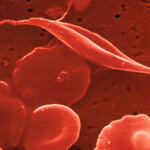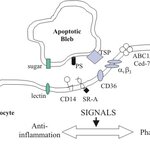Immunology

There are hurdles to clear before malaria elimination can be achieved. A supplement published in Malaria Journal features a series of articles reviewing the many aspects of the research agenda for global malaria elimination.
One of the supplement's reviews charts the progress that has been made in the development of malaria vaccines intended for eradication, rather than clinical disease prevention. Elimination requires a different vaccine strategy, since success will depend on killing all parasites in the community in order to completely stop transmission. According to the Editor-in-Chief of…

Less experienced prostitutes are more likely to have sexually transmitted infections (STIs). A study of more than a thousand female sex workers in Cambodia, reported in the open access journal BMC Infectious Diseases, has shown that girls who were new to the sex industry were twice as likely to have gonorrhoea or chlamydia.
Heng Sopheab from the University of Bergen, Norway, and the National Center for HIV/AIDS, Dermatology and STDs, Cambodia, led a team of researchers who investigated the prevalence of STIs and the health behaviour of female sex workers in the popular tourist destination of…

More than five million people die every year from infectious diseases, despite the availability of numerous antibiotics and vaccines. The discovery of penicillin to treat bacterial infections, along with the development of vaccines for previously incurable virus diseases such as polio and smallpox, achieved great reductions in mortality during the mid-20th century.
Recently, spectacular advances in medical imaging combined with mathematical tools for modelling the human immune system have provided a base for a new push against infectious disease. The challenges and opportunities presented by…

A portable test being developed by biodetection expert Stratophase could soon enable farmers and vets to accurately detect highly contagious diseases such as bovine TB and foot and mouth in the field, reducing false alarms and containment time and enabling remedial action to be taken more quickly.
A total of 2,030 cases of Foot and Mouth Disease (FMD) were confirmed in Great Britain between February and September 2001.* Millions of cows were slaughtered during the eradication programme and large swathes of the British countryside fenced off and declared out of bounds to the public for fear…

Measures imposed to reduce exposure to nuts are often based on irrational fears of nut allergies and are becoming increasingly sensationalist, according to Professor Nicolas Christakis from Harvard Medical School on bmj.com today.
A peanut on the floor of a school bus leading to evacuation and decontamination for fear that it might be eaten by the 10 year old passengers, and schools declaring themselves "nut free" by banning nuts, peanut butter, homebaked goods and any foods without ingredient labels, are just some examples cited in the article. According to Christaki, there is no…

As our knowledge of biology has increased exponentially, so has our potential to find new treatments and technologies to battle ailments previously incurable. However, many of these expansions of knowledge have faced stalling challenges and hurdles, halting practical applications. Gene therapy has been one of these dreams, touted as having endless potential, yet viable medical treatments were always yet to be developed. This is all about to change, as new laboratory research has seen unprecedented developments in gene therapy.
Researchers as St. Jude Children’s Research Hospital have…

The BMJ published a retrospective cohort study today showing only 3 out of 380,000 females ages 12-26 in Australia had 'probable' hypersensitivity to the cervical cancer vaccine Gardasil.
Unlike the U.S., where for some unfathomable reason some people still fight tooth and nail against vaccines, Australia has had a nationwide program to vaccinate females in that age group since April 2007.
There were 35 reports of suspected hypersensitivity, but only reactions from three of the 25 patients that agreed to skin-prick and injection (to confirm reactions) were likely tied to the vaccine.
The…

A study published this month in Clinical Immunology, the official journal of the Clinical Immunology Society (CIS), describes a new method that facilitates the induction of a specific type of immune suppressive cells, called 'regulatory T cells' for therapeutic use. These immune suppressive cells show great potential for the treatment of autoimmune diseases and improving transplantation outcomes.
Immunotherapy refers to a collection of treatments based upon the concept of modulating the immune system to achieve a prophylactic and/or therapeutic goal. For example, inducing immune…

SARS – severe acute respiratory syndrome – alarmed the world five years ago as the first global pandemic of the 21st century. The coronavirus (SARS-CoV) that sickened more than 8,000 people – and killed nearly 800 of them – may have originated in bats, but the actual animal source is not known.
In an effort to understand how SARS-CoV may have jumped from bats to humans, a team of investigators from Vanderbilt University Medical Center and the University of North Carolina at Chapel Hill has now generated a synthetic SARS-like bat coronavirus. The virus – the largest replicating synthetic…

Every type of disease has a specific treatment program. We have drugs to treat symptoms of countless illnesses and maladies, but viral infections continue to elude treatment. While we have vaccines to prevent initial infection of some viruses and other medications to treat problematic symptoms, there is little one can do to prevent a virus from replicating and causing disease. Viral infections can be lethal and without treatment options, we are left with our own natural defenses to fight off viral invaders. This is about to change.
Researchers at UT Southwestern Medical Center in…